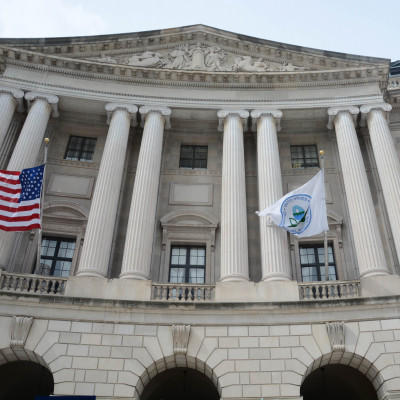April 1, 2024
March 2024 at Policy Integrity
- EPA Effort to Prevent Chemical Accidents Reflects Policy Integrity Input
- The Case for Considering Animal Welfare in Regulatory Cost-Benefit Analysis
- How Does the Value of Nature Change Over Time? – New Paper in Science
- The Latest in Major Questions Litigation
- Upcoming Events
- More from This Month
-

EPA Effort to Prevent Chemical Accidents Reflects Policy Integrity Input
In order to protect vulnerable communities from chemical disasters that release toxic air pollution, EPA recently finalized amendments updating and expanding the risk management program (RMP) under the Clean Air Act. This rule includes a package of updates to help prevent chemical fires, explosions, and releases of hazardous substances at industrial facilities, which can cause injury, suffering, and death. The final rule incorporates changes in line with Policy Integrity’s comments on the proposed rule. For example, the final rule includes considerably more attention to the issues of underreporting, unquantified benefits, and the risks of larger, catastrophic incidents. It also includes consideration of climate change-exacerbated hazards, in line with our recommendations.
-

The Case for Considering Animal Welfare in Regulatory Cost-Benefit Analysis
Federal agencies often justify the scope and scale of their regulations using cost-benefit analyses (CBA), but this process has at least one glaring blind spot: It gives virtually no weight to nonhuman animals’ lives and interests. In a forthcoming law review article, our Andy Stawasz argues that agencies can – and even must – correct this oversight. The article touches on a canonical and illustrative Supreme Court case, Entergy Corp. v. Riverkeeper, Inc., involving an EPA regulation of power plant cooling water intake structures, which are often located in rivers and lakes. In its CBA, the agency found that these structures crush, asphyxiate, or otherwise painfully kill billions of fish per year. Despite this finding, EPA only considered the loss of fish caught for things like sport and food when estimating the regulation’s benefits, finding a nonzero value for only 1.8% of the animals killed. Unfortunately, this CBA-driven regulatory decision is representative of many that similarly neglect to consider the full scale of suffering they create or prevent. Stawasz finds no legal prohibitions preventing agencies from considering animals’ interests in CBA, and he shows why agencies often must include this factor. He then proposes tractable ways to implement this vision.
-
_400_400_90_c1.jpeg)
How Does the Value of Nature Change Over Time? – New Paper in Science
It’s often difficult to precisely quantify the benefits we derive from the natural world, whether they come in the form of clean air from trees or the beauty of a preserved landscape. Late last month, the federal Office of Information and Regulatory Affairs (OIRA) released finalized “ecosystem services” guidance which standardizes the process by which agencies attempt to do this calculation, promotes established methodologies, and puts in place guardrails to prevent overvaluation. In a new paper published in Science, our Peter Howard and co-authors argue that an additional consideration is needed in guidance documents like this one: an understanding of how the value of nature changes over time. Specifically, they argue that ecosystem services actually become more valuable as they become scarcer and as incomes rise, increasing the amount people are willing to pay for benefits. They also propose a method through which governments can accurately approximate this changing value over time. Right now, government guidance usually assumes that values remain constant. This paper may help change that assumption, correct the downward bias it creates, and push governments towards a more accurate and useful process for valuing nature-based benefits and costs in their policy decisions.
-

The Latest in Major Questions Litigation
A challenge to the U.S. Department of Labor's 2022 Investment Duties Rule now pending before the Fifth Circuit represents yet another case in which parties have tried to use the major questions doctrine to argue against a regulation. Here, challengers argued that the rule, which clarifies certain fiduciary duties regarding the selection of investments that address ESG goals, triggers the major questions doctrine because, they asserted, it’s economically and politically significant. Our brief explains that, while economic and political significance may be necessary conditions for triggering the major questions doctrine, they have never been sufficient. Rather, the Supreme Court's recent major questions precedents explain that cases “extraordinary” enough to trigger the doctrine have been ones in which history, breadth, and economic and political significance all favor application of the doctrine. Our brief argues that the lower court correctly declined to apply the major questions in this case because history alone demonstrated the 2022 Investment Duties Rule was analogous to past exercises of DOL authority and thus far from extraordinary.
-

Upcoming Events
Join us for one or more of our upcoming virtual events!
- 4/4 - The Potential Role of Federal Regulation in Voluntary Carbon Markets: This webinar, hosted in partnership with the Initiative on Climate Risk and Resilience Law, will cover topics like the appropriateness and timing of potential federal regulations for voluntary carbon markets given the current level of market maturity as well as possible types and targets of federal regulation.
- 4/10 - Electric Transmission and the Energy Transition (Perspectives From Africa, Europe, and North America): This webinar, co-hosted with the European University Institute’s Florence School of Regulation, will explore the challenges, strategies, and evolving dynamics associated with electric transmission infrastructure on three different continents. Speakers will include Maria Robison, Director of DOE’s Grid Deployment Office; Rob Gramlich; and senior officials/experts from Europe and Africa.
- 4/18 - The Role of Economics in Federal Regulatory Advocacy: This webinar, co-hosted with the Washington Center for Equitable Growth, is aimed at economists seeking to influence federal regulatory policy and will cover topics including the structure of the U.S. government, the legal requirements of the regulatory process, and the role of economics in that process.
- 4/29 - Electrification in Buildings and Communities: This webinar, supported by the Sloan Foundation, will highlight cutting-edge research on the benefits of, impacts from, and barriers to resilient electrification, especially in low-income and rural communities. The Director of the Department of Energy's Office of State and Community Energy Programs will discuss how his office is working to promote electrification.
-
More from This Month
- We announced Don Goodson as our new Deputy Director and Max Sarinsky as our new Regulatory Policy Director. We're fortunate to work with both of them and we look forward to their leadership in these new roles!
- Our Jenn Danis and Dena Adler published an op-ed in Utility Dive titled, “Why EPA Can Cut Carbon Pollution from Power Plants Without Sacrificing Grid Reliability.”
- We also submitted:
- Comments to EPA on its new effluent standards for meat and poultry facilities.
- Comments to EPA on amendments to its standards and guidelines for large municipal waste combustors.
- A letter to DOE on its programmatic review of the LNG export approval process.
- Joint comments, with NYU Law’s Guarini Center, to the New York State Department of Environmental Conservation and NYSERDA on the New York Cap-and-Invest Program.
- Comments to DOE on its proposed efficiency standards for fans and blowers.
